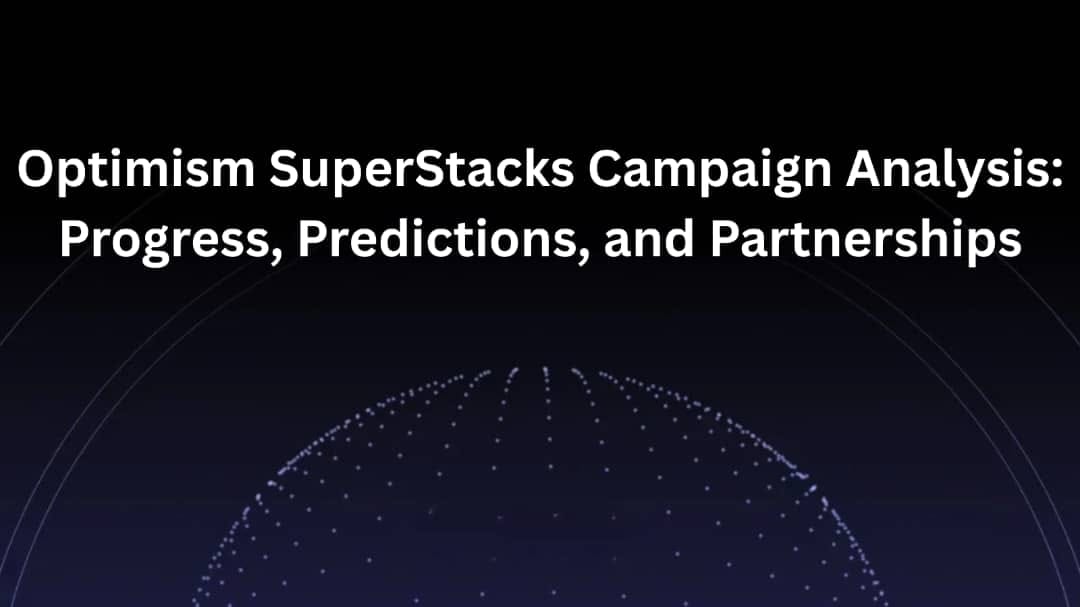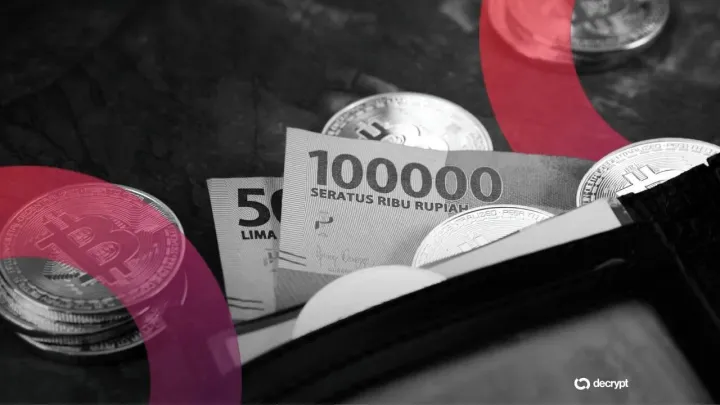Optimism SuperStacks Campaign Analysis: Progress, Predictions, and Partnerships

Introduction
As Ethereum continues to scale, Layer 2 solutions like Optimism are shaping the future of decentralized finance (DeFi). Optimism's "SuperStacks" campaign is a pioneering initiative launched to incentivize cross-chain interoperability and robust liquidity provisioning, all while preparing the ecosystem for the launch of the Superchain. Running from April to June 2025, the campaign seeks to unify multiple chains under a shared infrastructure and governance model. In tandem, emergent projects such as Mitosis are introducing radical new liquidity frameworks like Ecosystem-Owned Liquidity (EOL), setting the stage for potential collaboration with Optimism and other Layer 2 rollups. This article provides an in-depth examination of the SuperStacks campaign, evaluates its progress, explores post-campaign developments, and highlights synergistic opportunities with projects like Mitosis.
1. Background on Optimism and the Superchain Vision
Optimism is a Layer 2 Ethereum scaling solution built using Optimistic Rollups, a technology that reduces transaction costs and increases throughput without compromising Ethereum's security. Beyond its technical benefits, Optimism is deeply rooted in public goods funding and the broader ethos of Ethereum. Its core development includes the OP Stack, a modular and open-source development framework for building custom blockchains that will ultimately become part of the "Superchain."
The Superchain vision envisions a mesh of interoperable chains, all built using OP Stack and maintained through a unified governance and incentive structure. This framework enables seamless data and asset movement across chains, aiming to make interoperability a default feature rather than a technical hurdle. As the Superchain approaches its launch phase, the SuperStacks campaign acts as a transitionary testing ground to evaluate network behavior, incentive alignment, and governance distribution across this ecosystem.
2. The SuperStacks Campaign: Purpose and Structure
SuperStacks is not just another DeFi rewards program. It is an XP (experience points)-based campaign designed to reward users and protocols for behaviors that enhance interoperability, such as providing liquidity across chains, using multi-chain dApps, and contributing to bridge usage. Participants accumulate XP that can be redeemed for OP token incentives and governance privileges.
The campaign involves collaborations with over 20 major DeFi protocols, including LayerZero, Hop Protocol, Across, and Velodrome. By encouraging liquidity across chains and focusing on sustainable user engagement, SuperStacks aims to prototype incentive structures for a more composable and interconnected DeFi environment.
Liquidity pools are strategically selected to maximize network effects. For example, stablecoin pools such as USDC.e or cross-chain LSTs (Liquid Staking Tokens) are prioritized due to their utility and interoperability. The campaign also introduces boosted XP for users interacting with protocols that deploy contracts across multiple OP Stack chains.
3. Campaign Progress Evaluation
In the first six weeks of the campaign, Optimism's SuperStacks initiative has achieved significant engagement metrics. Over 600,000 wallets have interacted with supported dApps and liquidity pools. The total value locked (TVL) across all eligible protocols has exceeded $1.5 billion. This indicates both strong initial traction and an increasing appetite for multichain coordination.
Key metrics include:
- A 3x increase in wallet interactions across multiple OP Chains.
- A 150% increase in the number of users providing liquidity to interoperable asset pools.
- A sharp rise in the use of cross-chain messaging protocols like LayerZero.
However, the campaign has not been without its hurdles. Fragmented user experiences due to the lack of gas abstraction, confusion about XP calculation, and inconsistent interfaces between different dApps are ongoing pain points. Security concerns especially regarding cross-chain bridge reliability remain a critical issue that the community continues to address.
4. Post-Campaign Predictions
The success of the SuperStacks campaign offers critical insights into the future of DeFi incentives. We expect several key evolutions post-campaign:
- XP-Based Governance: The experience points system introduced during the campaign could evolve into a broader governance model. XP may become a reputation-based system for electing governance delegates, voting on protocol upgrades, or even deciding treasury allocation.
- Intent-Centric Incentives: Instead of rewarding raw TVL or transactional volume, future campaigns may incentivize specific user behaviors that align with long-term protocol goals. Examples include staking for governance, participating in dispute resolution systems, or funding public goods.
- Cross-Chain Primitives: With increased interoperability, new DeFi primitives may emerge like Superchain Indexes or multi-chain vault strategies that track and yield-farm across multiple chains simultaneously.
- Shared Liquidity Ecosystems: Expect further adoption of liquidity solutions that emphasize shared, long-term alignment rather than mercenary capital. This sets the stage for projects like Mitosis and its EOL model to become cornerstones of multichain finance.
5. Mitosis and the Ecosystem-Owned Liquidity (EOL) Model
Mitosis is a novel liquidity infrastructure designed to create a more modular and programmable liquidity layer across chains. Its Ecosystem-Owned Liquidity (EOL) mechanism transforms traditional liquidity provisioning by shifting capital from individually owned LPs to community-governed vaults.
In this model:
- Liquidity providers deposit into smart contract vaults.
- They receive tokenized representations (miAssets) that grant exposure to yields and governance votes.
- The ecosystem (via DAO governance) collectively decides how to allocate that liquidity.
This model addresses many inefficiencies seen in traditional DeFi:
- Fragmented Liquidity: EOL pools assets together, increasing depth and reducing slippage.
- Inefficient Capital: Idle capital is redirected toward optimal use-cases voted on by the community.
- Governance Misalignment: LPs now have a say in how their capital is used, aligning incentives.
The flexibility of the EOL model makes it a strong candidate for integration into the Superchain's liquidity infrastructure, particularly in future iterations of the SuperStacks framework.
6. Potential Collaboration Between Mitosis and Optimism
The thematic alignment between SuperStacks and EOL is striking. Both frameworks aim to:
- Reduce liquidity fragmentation.
- Encourage long-term participation over short-term speculation.
- Empower users to take an active role in shaping ecosystems.
6.1 Integration Opportunities:
- XP Boosts for EOL Participation: By integrating Mitosis' EOL vaults into the SuperStacks framework, users could receive XP boosts for contributing to community-aligned liquidity.
- Governance Overlap: Mitosis vaults could adopt or sync with Optimism governance signals, creating cross-protocol alignment.
- Shared Liquidity Pools: miAssets could be used as collateral in OP Chain lending protocols or staked for additional rewards.
This partnership would be an exemplary case of protocol composability, showing how foundational infrastructure from two projects can synergize for broader ecosystem benefit.
7. Strategic Implications for the DeFi Space
DeFi is moving from yield-chasing to coordination-focused ecosystems. Campaigns like SuperStacks and models like EOL indicate a shift in the mental model of liquidity provisioning. Incentives are becoming multi-dimensional, combining yield, governance rights, long-term alignment, and reputational staking.
As DAOs mature, treasury management, liquidity provisioning, and incentive programs will become increasingly protocol-driven and aligned with public goods funding. The rise of preferential boost programs rewarding behaviors like multi-chain participation, long-term staking, or active governance marks the evolution of token incentives into a sophisticated, multi-variable mechanism for growth.
Mitosis, with its EOL paradigm, is well-positioned to serve as a backbone for this shift. In collaboration with rollups like Optimism, it could provide the infrastructural capital layer that powers the next generation of DeFi protocols and user experiences.
Conclusion
The Optimism SuperStacks campaign is a landmark initiative, not just for its immediate incentives but for its long-term implications on how DeFi will function in a multichain world. Its success in attracting liquidity, fostering cross-chain collaboration, and testing novel incentive structures is a strong indicator of what’s to come.
Mitosis, through its EOL model, offers a complementary vision one where liquidity is communal, governance is active, and capital is used efficiently across ecosystems. Together, they could define the liquidity and governance primitives of the Superchain era.
As the campaign concludes and the ecosystem prepares for the launch of the full Superchain, collaborations like Optimism x Mitosis will be crucial. They represent the convergence of vision, infrastructure, and community needed to bring DeFi into its next phase of evolution.
Further Reading and Resources
- Optimism Governance Forum: https://gov.optimism.io
- Mitosis Documentation: https://university.mitosis.org
- OP Stack GitHub Repository: https://github.com/ethereum-optimism
- Mitosis Blog: https://blog.mitosis.org
- SuperStacks Explainer: https://community.optimism.io


Comments ()